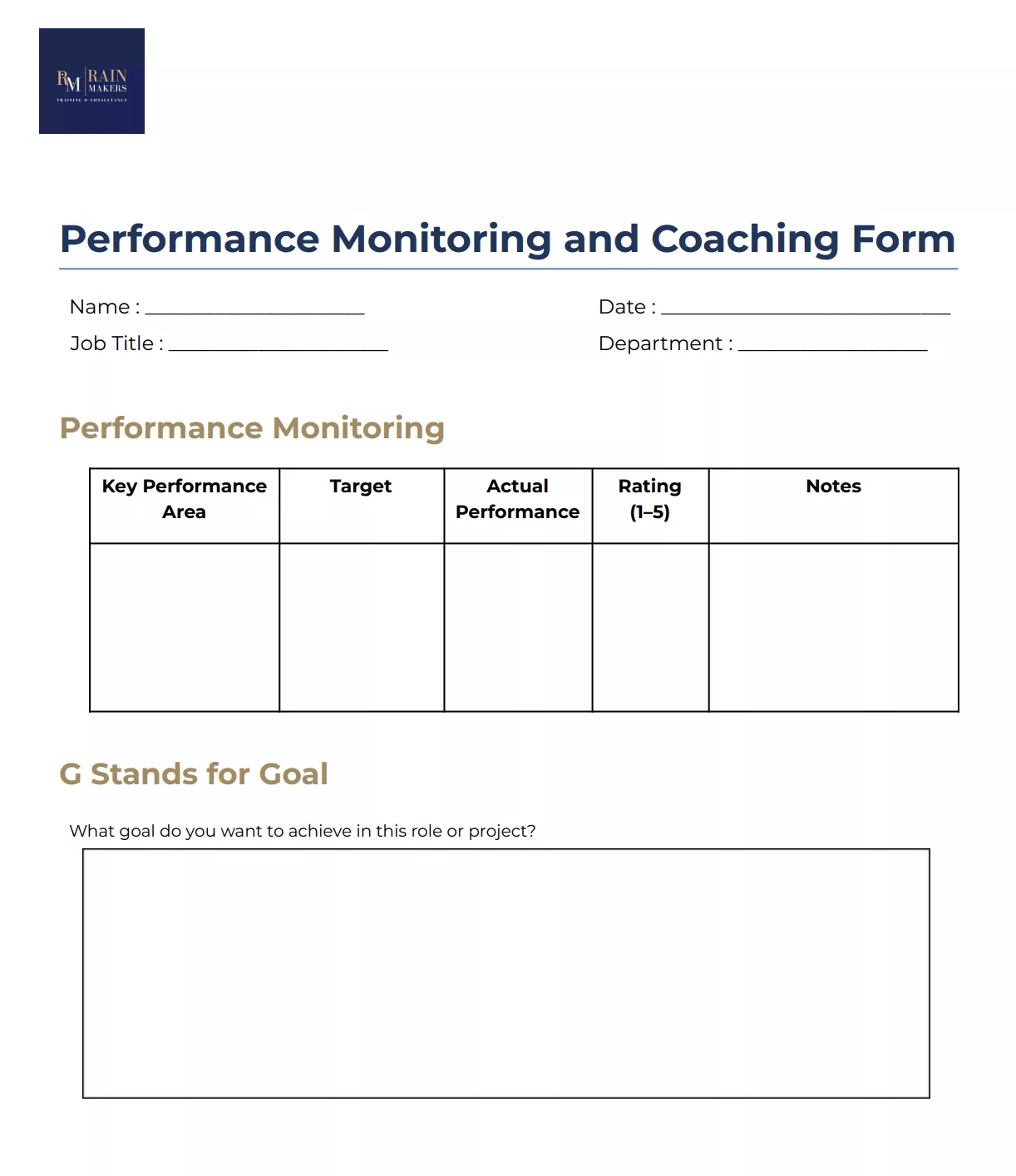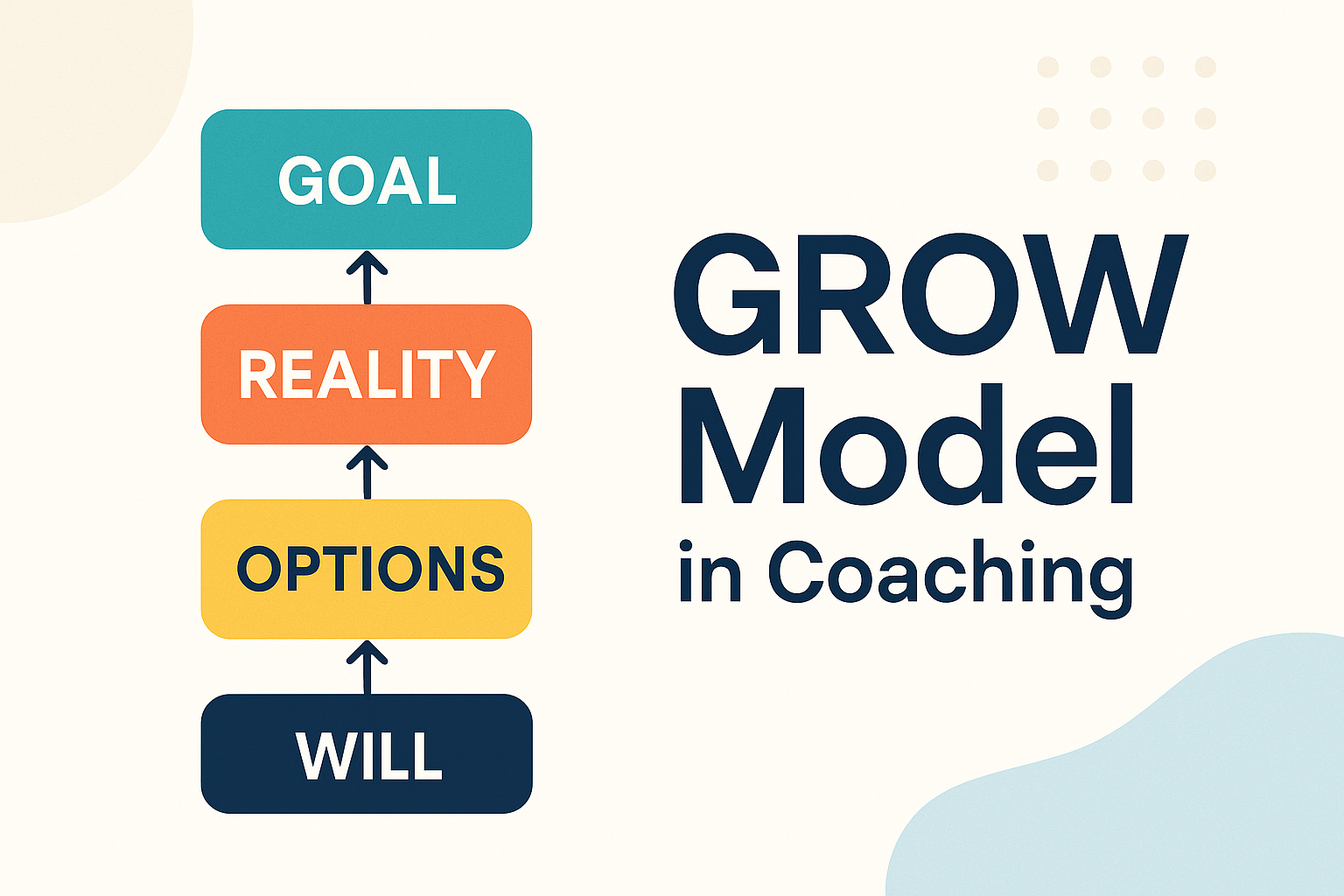by Venchito Tampon | Last Updated on October 2, 2025
Performance monitoring and coaching form is a structured tool for helping organizational leaders track and measure performance to guide their teams through practical coaching sessions.
This form combines two essential practices: performance monitoring (which measures actual results vs. target performance) and coaching (which develops employees through effective, structured conversations).
 Core Pillars of the Performance Monitoring and Coaching Form
Core Pillars of the Performance Monitoring and Coaching Form
1. Employee Information
Like any form, the first section of the performance monitoring and coaching form collects the basic details of the employee (name, role or job title, department or team, and date when the coaching session takes place).
These details may be too simple, but serve the actual purpose of:
- Accountability – by jotting down info, your firm owns the entire performance and coaching discussion. The leader/manager and employees know what progress is tracked, when, and why.
- Traceability – the beauty of dates and actual role information is that you can store and review them later, which makes it easier to follow through and compare actual results across different time periods, or simply look back at previous coaching sessions.
- Context – depending on the job role and department, it’s different from one department to another. So, let’s say the goals of a sales officer are quite different from those of an operations supervisor. Knowing this context avoids any misaligned coaching sessions.
2. Performance Monitoring
The next section of this form helps measure how well an employee performs regarding his or her agreed-upon targets. It normally includes a table where the manager and subordinate can record specific elements:
- Key Performance Areas – include the main responsibilities and focus areas of the role (e.g., CSAT score, sales target, etc.).
- Target – expected outcome that was set for that KPA.
- Actual Performance – the result that was actually achieved within the time period of review.
- Rating (1-5) – a scale to assess whether the performance met expectations (i.e., 1 = needs improvement or 5 = exceeded expectations).
- Notes – input your observations, clarifications, or any specific examples
The performance monitoring section covers three purposes:
- Objective Measurement – if you document targets and actual results, it makes your coaching more objective in managing performance. You see facts clearly.
- Foundation for Coaching – the data you collected sets a good atmosphere for your coaching conversation. You guide the discussion around specific goals, targets, achievements, or gaps.
- Progress Tracking – having several forms will help you compare and show trends in employee performance – making your coaching efforts more measurable and impactful.
3. GROW Coaching Framework
This is the meat part of the performance monitoring and coaching form, as we use the globally renowned coaching framework, the GROW model, which you and I will maximize to structure coaching conversations.
The form is divided into four core parts:
G – Goal
This is the stage where you clarify what your subordinate or specific employee wants to achieve. Goals vary depending on the performance targets, career objectives, or broader career aspirations.
Some guiding questions may include:
- What is the specific target, or measurable goal, you want to achieve?
- What would success look like for you in this job role?
- How can this particular goal link to your current job responsibilities or the objectives in our company?
The main purpose of the Goal stage is to help both the manager (coach) and associate (coachee) to align their expectations and outcomes – creating their own shared definition of success.
R – Reality
This stage assesses your employee’s current situation (reality) in relation to his or her desired goal or target. It will uncover any assumptions, gaps, or obstacles that might be preventing his or her progress.
Guiding questions may include:
- Where are you right now in relation to your goal?
- What challenges or roadblocks are you experiencing?
- What have you tried, and what results did you get?
- What strengths can you leverage to move closer to your goal or target?
The purpose of the Reality section is to build the right awareness of your coachee’s present stage or reality. By contrasting reality with the actual goal, your coachees can see the necessary changes and recognize more of their strengths and blind spots.
O – Options
This stage is where you help coachees generate possible strategies to move closer to their goals. Instead of focusing only on the problems, you shift the discussion to opportunities and alternatives that will improve their performance.
Guiding questions include:
- What different strategies and approaches could you take to reach your goal?
- What resources, support, or tools are available to you?
- What else would you try if there were no constraints (or barriers towards achieving your goals)?
- Which of these options is more reliable, feasible, and inspiring?
The Options stage aims to inspire and encourage creativity and create ownership.
W – Way Forward (Will Do)
In this stage, you translate insights and strategies into specific action steps – where you really need to establish accountability.
Guiding questions include:
- What exact steps or actions will you take moving forward?
- When and how will you measure progress?
- What support or resources do you need from me, the team, or the company?
- How will you hold yourself accountable for all these actions?
The Way Forward stage aims to conclude your coaching conversations into actions – leaving your coachee with clear steps, timelines, and responsibilities.
The Author
Venchito Tampon
Venchito Tampon is a Filipino motivational speaker, Business Consultant, Founder and Lead Corporate Trainer of Rainmakers Training Consultancy. He trained and spoken in over 250+ conventions, seminars, and workshops across the Philippines and internationally including Singapore, Slovakia, and Australia. He has worked with top corporations including SM Hypermarket, Shell, and National Bookstore.
He also founded SharpRocket, a digital marketing company, Blend N Sips, eCommerce for coffee supplies, and Hills & Valleys Cafe, a local cafe with available franchising.
He is a certified member of The Philippine Society for Talent Development (PSTD), the premier organization for Talent Development practitioners in the country.
An active Go Negosyo Mentor (of Mentor Me program) and a business strategist and consultant.
You may also like
Best Leadership Training Providers in the Philippines [2025]
If you’re short on time: After evaluating 15+ corporate training providers in…
GROW Model in Coaching
GROW Model is a globally known coaching framework for structuring conversations…



